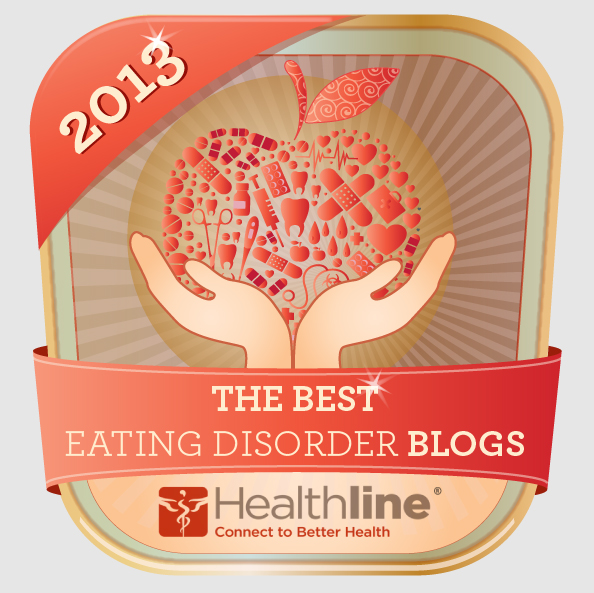
We have Mary Evans Young to thank for International No Diet Day. A recovered anorexic and director of the British anti-diet campaign, Diet Breakers, Mary Evans Young established INDD (International No Diet Day) in 1992 to raise awareness of eating disorders and combat the diet industry.
Mary Evans Young explains:
"I started INDD in the spring of '92 following two things. The first was seeing a television programme where women were having their stomachs stapled. One woman had split the staples and was in for her third op[eration]. And then a young girl of 15 committed suicide because 'she couldn't cope being fat.' She was size 14 (12 in US). I decided somebody had to stand up and try to stop this bloody madness and in the absence of anybody else, I decided it would be me. So I sent out a press release titled 'Fat Woman Bites Back'...and got some media attention. I was desperate to keep the anti-diet/size acceptance concept in the public eye. So, without really thinking about it, at the end of a live TV interview I said, 'Don't forget to celebrate No Diet Day.' ...Having declared it on prime time national TV I then set about organising a picnic in Hyde Park. Alas it rained, so we adjourned to my living room instead."
Take the INDD Pledge
INDD's Goals
Dieting often leads to unhealthy and dangerous attitudes towards food. Restriction, being the nature of dieting, places negative values on certain foods such as too many calories, too much fat, etc. The tension and stress of struggling over our food choices puts food in the position of enemy. A child/teen exposed to these attitudes in a dieting parent, sibling, or friend has an increased risk of developing an eating disorder. Anorexia and Orthorexia are two eating disorders to commonly result from dieting.
Some Interesting Stats
Women and Men:
- The average American woman is 5’4" tall and weighs 140 pounds. The average American model is 5’11" tall and weighs 117 pounds.
- 91% of college aged women have dieted in an attempt to control their weight
- 25% of American men are on a diet on any given day
- 40-50%% of American women are on a diet on any given day
Children:
- 42% of 1st-3rd grade girls want to be thinner
- 81% of 10 year olds are afraid of being fat Over 50% of 10 year old girls wish they were thinner
- 51% of 9 -10 year-old girls feel better about themselves if they are on a diet
- 46% of 9-11 year-olds (and 82% of their families) are sometimes/very often on diets
- 90% of female high school juniors & seniors women diet regularly though 10%-15% are over the weight recommended by the standard height-weight charts
Overall:
- 95% of all dieters will regain the weight they lost in 1-5 years
- 35% of dieters will progress to pathological dieting.
- 20%-25% pathological dieters will progress to partial or full-syndrome eating disorders
- Those who diet moderately are 5 times more likely to develop eating disorders than non-dieters
- Those who diet severely are 18 times more likely to develop and eating disorder
- 1% of teenage girls & 5% of college-age women become anorexic or bulimic
- Between 90% and 99% of reducing diets fail to produce permanent weight loss
- 15 percent of young women in the US who are not diagnosed with an eating disorder exhibit substantially disordered eating behavior and attitude
- 8 million people in the US suffer from an eating disorder
- In your lifetime 50,000 people will die as a direct result of their Eating Disorder
- The current media ideal of thinness is achieved by less than 5% of the female population
- Americans spend more than $40 billion dollars a year on dieting and diet-related products (That’s roughly equivalent to the amount the U.S. Federal Government spends on education each year)
- Quick-weight-loss schemes are among the most common consumer frauds
- Diet programs have the highest customer dissatisfaction of any service industry
- Girls develop eating and self-image problems before drug or alcohol problems
- Drug and alcohol programs are in almost every school, but no eating disorder programs
- A recent survey: only 30% out of 250 randomly chosen women 21-35 years of age had normal bone mass. It was concluded that women are so afraid of gaining weight from eating dairy products
The Big Deal About Dieting: What You Should Know
- “Yo-yo” dieting has negative health effects such as increased heart disease, long lasting negative impact on metabolism, etc.
- Dieting forces your body into starvation mode. In order to conserve energy your body slows it's normal functions.This means your natural metabolism actually slows down.
- Dieters often lack important nutrients such as calcium which is needed for strong bones and to combat osteoporosis.
More Information:
Resources:
sources:
linked above and
http://www.eskimo.com
http://parentingteens.about.com/cs/eatingdisorders/a/eatingdisorder5.htm
blueribbon source:http://www.eskimo.com


 0
comments
0
comments




















